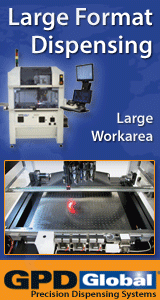Printed Circuit Board Assembly & PCB Design Forum
SMT electronics assembly manufacturing forum.
- SMTnet
- »
- Electronics Forum
- »
- Profile control parameters
Profile control parameters
![]() I seem to recall seeing some references to controlling the t...
- Jan 20, 2003
by
Steve Thomas
I seem to recall seeing some references to controlling the t...
- Jan 20, 2003
by
Steve Thomas
![]()
![]()
![]() Double check the data sheets for your paste. Just as an exa...
- Jan 20, 2003
by
Jon Fox
Double check the data sheets for your paste. Just as an exa...
- Jan 20, 2003
by
Jon Fox
![]()
![]()
![]() Sorry, what I meant was that they don't provide a duration f...
- Jan 20, 2003
by
Steve Thomas
Sorry, what I meant was that they don't provide a duration f...
- Jan 20, 2003
by
Steve Thomas
![]()
![]()
![]() Hi Stevo,
Most paste suppliers say something like, �above...
- Jan 20, 2003
by
davef
Hi Stevo,
Most paste suppliers say something like, �above...
- Jan 20, 2003
by
davef
![]()
![]()
![]() Hi
You already received good answers.
A thing to remem...
- Jan 21, 2003
by
Hi
You already received good answers.
A thing to remem...
- Jan 21, 2003
by
![]()
![]()
![]() OK, so the issue is with the variability of the alloys on th...
- Jan 21, 2003
by
Steve Thomas
OK, so the issue is with the variability of the alloys on th...
- Jan 21, 2003
by
Steve Thomas
![]()
![]()
![]() Hi
I thought I would come back to this one for a second.
...
- Jan 22, 2003
by
Hi
I thought I would come back to this one for a second.
...
- Jan 22, 2003
by
![]()
- SMTnet
- »
- Electronics Forum
- »
- Profile control parameters








